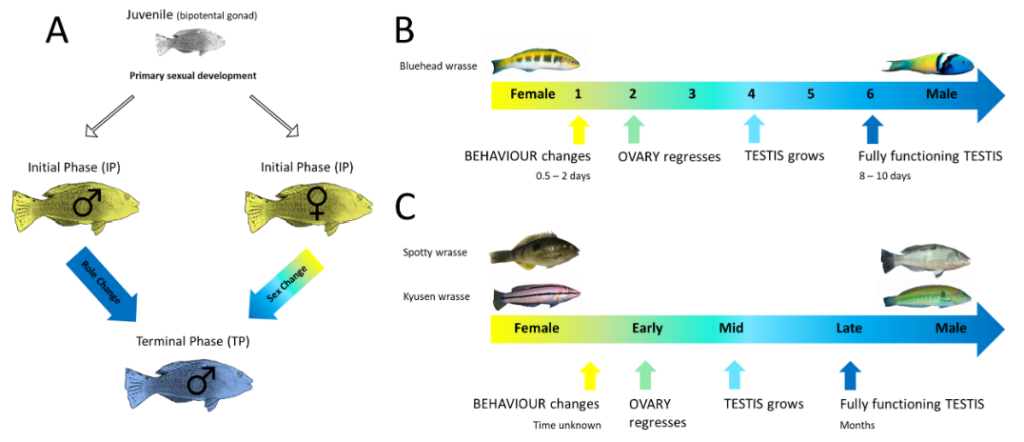Case study: Bluehead Wrasse
Bluehead wrasse are a protogynous species, so they typically begin life as females. However, sometimes they initially develop as males that visually and behaviorally resemble females. Mating territories are dominated by a single large male with an appearance that is distinct from females or any non-dominant males. Generally, the dominant male defends this territory from other males and has exclusive mating opportunities with the present females. However, the small primary males (“sneaker males”) can sometimes blend in with the female population and mate without drawing the attention of the dominant male.
If the dominant male becomes absent from the population, growth is stimulated in the rest of the group. The largest female (or in some cases, a primary male) will transition into the role of the dominant male. In wrasse this involves not just a radical transformation of the reproductive anatomy and physiology, but also a radical change in physical appearance. Like anemonefish, this fits the general postulates of the size advantage model (SAM). The SAM would predict that protogyny would be present in species where growth only benefits fitness as a male. In Bluehead wrasse, growth only benefits the dominant male. Being large doesn’t benefit a female, and growth would actually be unfit in the minority of fish who begin life as a male as this would ruin their female disguise. When the dominant male leaves or dies, the fish in the colony grow and compete with each other to be the new male and maximize their fitness.

CLICK HERE to continue reading: Case study: Coral Gobies
Or navigate using the menu at the top this page